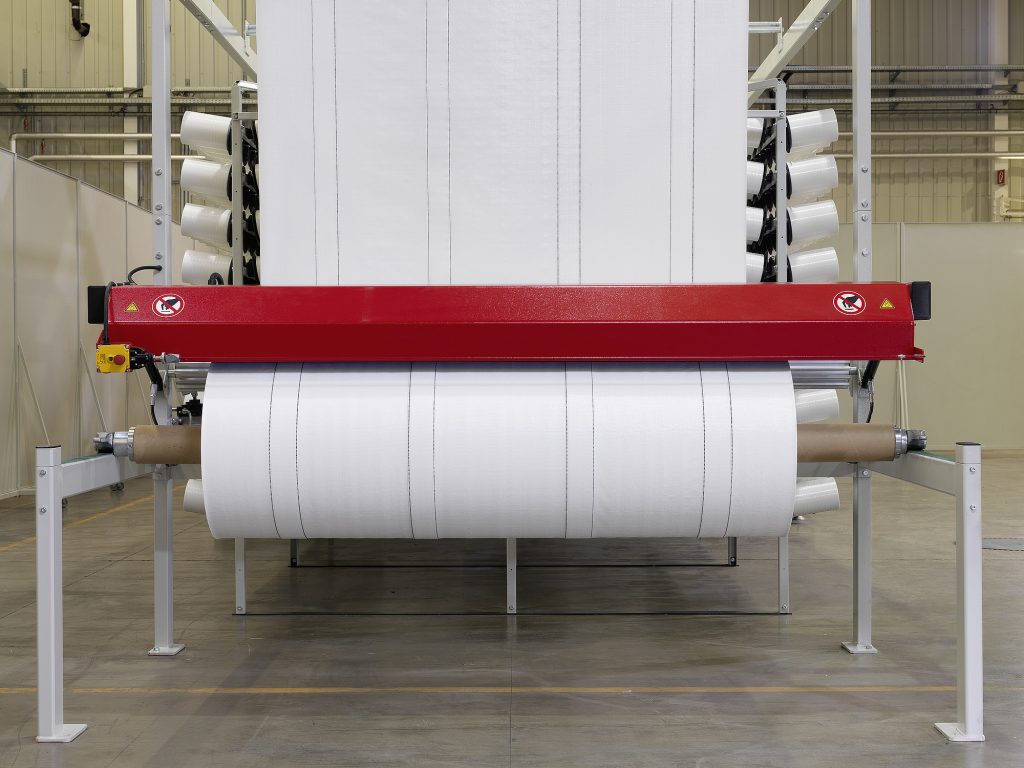
Introduction
The global packaging industry faces mounting pressure to balance durability, regulatory compliance, and sustainability—especially in sectors handling abrasive or fine materials like cement, plaster, and aggregates. VidePak, a leader in woven bag manufacturing since 2008, leverages its 30+ years of expertise and Austrian Starlinger machinery to produce food-grade woven bags that exceed ISO 22000 and regional safety benchmarks. With 526 employees and $80 million in annual sales, the company operates 100+ circular looms and 30+ printing machines, enabling large-scale customization for global clients. This report explores how material innovation, structural engineering, and regulatory alignment position VidePak’s solutions as industry benchmarks.
Material Selection and Structural Integrity
1. High-Performance PP Resins and Weaving Techniques
VidePak uses virgin PP resins with melt flow indices (MFI) of 8–12 g/10 min (ASTM D1238) to ensure uniform extrusion and weave consistency. Key design features include:
- Fine-Yarn Weaving: 12–15 threads/cm² density minimizes inter-fiber gaps, reducing particle leakage by 40% for powders like plaster or cement.
- BOPP Lamination: 20–30 µm coatings enhance moisture resistance (IP67 rating), critical for humid environments or outdoor storage.
- Reinforced Seams: Ultrasonic bonding achieves seam strengths of 50 N/cm², exceeding ASTM D5264 standards for load-bearing applications.
Case Study: A 2024 trial with a Vietnamese construction firm showed VidePak’s laminated PP bags reduced gypsum leakage by 35% during 1,000 km transport compared to traditional jute sacks.
2. Multi-Layer Construction for Leak Prevention
- Inner Liners: Kraft paper or PE liners add secondary barriers for fine powders. PE liners reduce moisture vapor transmission to <5 g/m²/day (ASTM E96).
- Valve Designs: Custom spouts (50–100 mm diameters) enable precise filling, reducing spillage by 25% during automated packaging.
Global Standards: Compliance-Driven Design
1. Regional Requirements and Testing Protocols
| Region | Key Standards | Performance Focus | VidePak’s Compliance Strategy |
|---|---|---|---|
| EU | 1935/2004/EC | Migration safety, no sensory alteration | PP resins tested for heavy metals (Pb <0.01 ppm). |
| US | FDA 21 CFR | Food-contact safety | PE liners certified for direct contact with dry foods. |
| Japan | JIS Z 0200 | Dust retention (≥95%) | Anti-static threads and tight weaves prevent electrostatic dust adhesion. |
| Australia | AS 2070 | UV resistance (1,000+ hours) | Carbon-black additives for outdoor durability. |
2. Sustainability and Recycling
VidePak’s closed-loop system recovers 98% of production waste, aligning with the EU’s Circular Economy Action Plan. The company is piloting PP-PLA hybrids to achieve 60% biodegradability within 180 days.
Design Optimization for Logistics Efficiency
1. Load-Bearing and Stackability
- Grammage and Thickness: 100–150 gsm bags with 0.15–0.25 mm thickness support 25–50 kg loads, ideal for palletized stacking up to 7 meters.
- Anti-Slip Coatings: Silicone-treated bases prevent shifting during transit, reducing warehouse accidents by 20%.
2. Customization for Market Needs
- Retail-Ready Designs: 5–10 kg bags with matte-finish printing and QR codes for traceability (e.g., EU organic certification).
- Bulk Industrial Solutions: 50–100 cm² block-bottom bags with reinforced handles for forklift handling.
FAQs: Addressing Critical Concerns
Q: How do food-grade bags compare to standard PP bags in cost?
A: Food-grade bags cost 10–15% more due to FDA/EC-compliant resins and migration testing, but reduce recall risks and enhance brand trust.
Q: Can these bags withstand freezing temperatures for cold-chain storage?
A: Yes. VidePak’s PE-lined bags remain flexible at -20°C, with a glass transition temperature (Tg) of -100°C, ideal for frozen additives.
Future Trends: Smart Packaging and ESG Alignment
VidePak is integrating RFID tags for real-time tracking in partnership with European logistics firms, aiming to reduce supply chain disputes by 25%. Additionally, blockchain-enabled QR codes are being tested to enhance compliance with the EU’s Digital Product Passport initiative.
Conclusion
VidePak’s food-grade woven bags exemplify how material science and regulatory foresight can harmonize industrial efficiency with sustainability. By prioritizing strength, leak prevention, and global compliance, the company sets a new standard for packaging abrasive and fine materials. As industries tighten ESG commitments, VidePak’s solutions offer a scalable path to operational excellence and market differentiation.
Explore Further:
- Learn how moisture-proof woven bags enhance material safety.
- Discover eco-friendly innovations in sustainable packaging.
This report synthesizes insights from ASTM/ISO standards, material science research, and VidePak’s operational data to guide businesses in adopting high-performance, compliant packaging solutions.